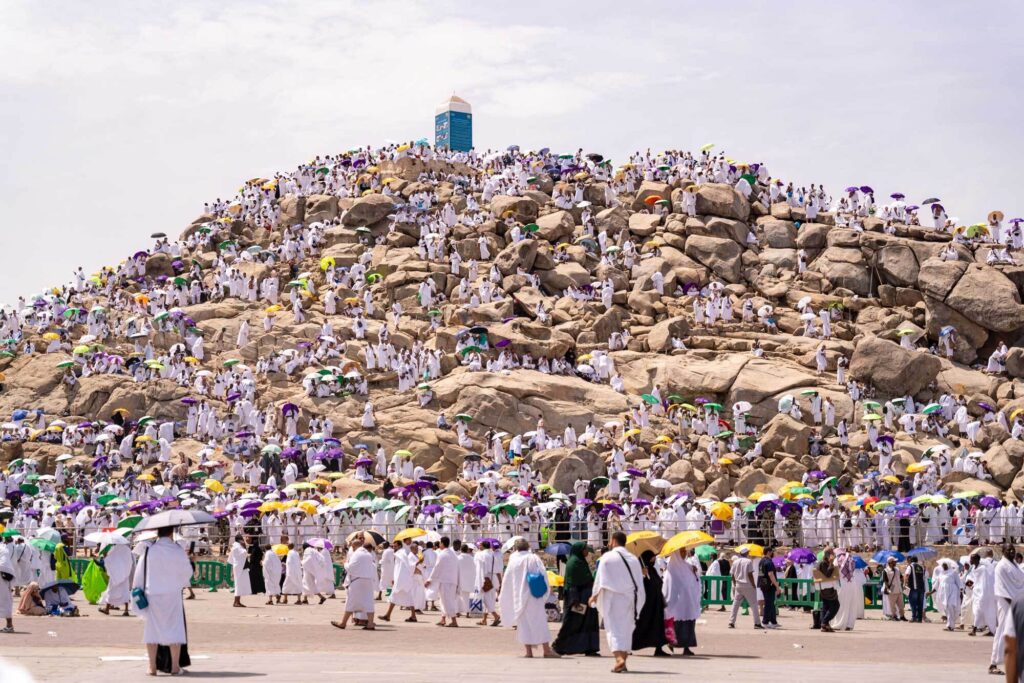Introduction
If you’re planning a spiritual journey to Madinah, you’re in for a deeply moving experience. This city isn’t just historical; it’s the heart of Islam after Makkah. Visiting the ziyarat places in Madinah connects us with the life of the Prophet ﷺ, his companions, and the soul of our faith. Each step echoes history, each site tells a story, and every corner carries a scent of sacredness. In this guide, we’ll walk together through important mosques in Madina, hidden gems, and powerful moments from Islamic history. Whether you’re visiting for the first time or the fifth, there’s always more to discover in the blessed city of the Prophet ﷺ.
What is Ziyarat? The Meaning Behind the Journey
Ziyarat means “visit,” but in the Islamic context, it refers to the act of visiting holy places, particularly those associated with the Prophet Muhammad ﷺ, his family, and his companions. It’s not just sightseeing. Ziyarat is a spiritual act filled with love, connection, and dua.
When we do ziyarat in Madinah, we aren’t just walking into mosques and cemeteries—we’re stepping into chapters of Islamic history. It’s a way to reflect, increase love for the Prophet ﷺ, and boost our Imaan. For many pilgrims from Pakistan and beyond, this journey becomes one of the most emotional parts of Umrah.
Why Visit Ziyarat Places in Madinah? (Spiritual & Historical Value)
Madinah is the city of light. The Prophet ﷺ lived here for 10 years. It’s where Islam blossomed into a powerful and peaceful civilization. By visiting historical places in Medina, we don’t just learn history—we feel it. You can stand on the battlefield of Uhud, pray where the Qiblah changed, and reflect in the garden of Rawdah.
There’s also great reward. The Prophet ﷺ said:
“Whoever visits me after my death, it is as if he visited me in my lifetime.”
(Bayhaqi)
Visiting these blessed places reminds us of sacrifice, strengthens our hearts, and brings our duas closer to acceptance.
Rules & Etiquettes of Performing Ziyarat in Madinah
Ziyarat must be done with the right mindset. Here’s how to do it properly:
- Intention (Niyyah): Make the intention for spiritual benefit, not just tourism.
- Dress Modestly: What to wear for Ziyarat? Men should wear simple white clothes. Women should wear loose, full-length garments with head coverings.
- Respect & Quietness: Avoid loud talking, laughter, or taking selfies inside sacred places.
- Cleanliness: Be in a state of wudu wherever possible.
- Follow Timing Guidelines: Especially for sisters, follow ziyarat timing for women in Madinah, usually in the early mornings or midday depending on local rules.
These etiquettes help us maintain the sanctity of the experience and receive its spiritual rewards.
Top 10 Must-Visit Ziyarat Places in Madinah.
Al-Masjid an-Nabawi (The Prophet’s Mosque)
This is the heart of Madinah and the second holiest site in Islam. Masjid Nabawi Rawdah is located inside, famously called Riyadh ul-Jannah, “a garden from paradise.”
The Prophet ﷺ said:
“What is between my house and my pulpit is a garden from the gardens of Paradise.”
(Sahih Bukhari)
Spending time here, especially in Rawdah, brings unmatched peace. It’s also the place where the Prophet ﷺ is buried, alongside Abu Bakr and Umar ﻋﻧﮭﻣﺎ ﷲ رﺿﻲ.
Place link here for Ziyarat Musjid Nabvi Internal link
Jannat al-Baqi
This ancient cemetery is home to the famous sahaba buried in Jannat al Baqi, including:
- Hazrat Uthman ibn Affan ﻋﻧﮫ ﷲ رﺿﻲ
- Hazrat Imam Hasan ibn Ali ﻋﻧﮫ ﷲ رﺿﻲ
- Hazrat Aisha ﻋﻧﮭﺎ ﷲ رﺿﻲ
- Hazrat Fatima ﻋﻧﮭﺎ ﷲ رﺿﻲ (according to many scholars)
The Prophet ﷺ often visited Baqi and made dua:
“Peace be upon you, O people of the dwellings! From the believers and the Muslims. Indeed, we are, Allah willing, to join you.”
(Sahih Muslim)
Visiting this graveyard reminds us of death, humbles our hearts, and teaches us gratitude.
Masjid Quba
Masjid Quba is the first mosque built in Islam. The Prophet ﷺ helped construct it with his own hands. He said:
“Whoever makes ablution in his house, then comes to Masjid Quba and prays two rak’ahs, he will have a reward like that of Umrah.”
(Sunan Ibn Majah)
This shows the importance of Masjid Quba in Islam and its unique reward. It is a peaceful, clean masjid and a must-visit for every pilgrim.








